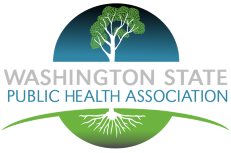Rethinking Our Approach for Urban Indian ResearchBy: Adrian Dominguez, MS ans Rose James, PhDUrban Indian health Institute, Seattle Indian Health Board
In order to address the concerns and processes of research conducted on the AI/AN population, reservation-based AI/AN communities can apply sovereignty rights to change this research trajectory. Tribal regulatory codes and oversight measures assure research addresses health priorities and that data ownership remains with the tribal community.5 Unfortunately, tribal protections don't entirely extend to AI/ANs who have relocated and are residing in urban environments. Today, among the AI/AN population, nearly 70% of tribal members and descendants live outside of reservations, specifically in urban areas.6 This was partly the result of the Indian Relocation Act of 1956, a U.S. law that created incentives for migration to urban areas. Despite a large proportion of AI/ANs living in urban areas, many AI/ANs are unnoticed and forgotten as they are dispersed in metropolitan areas, often multi-racial, and frequently misclassified as other racial or ethnic groups. Urban AI/ANs struggle for visibility, and society assumes they are non-existent. Likewise, AI/ANs continue to experience racism and stereotypes in urban areas that perpetuate unfair general attitudes and beliefs of past characterizations and descriptions of AI/ANs. These narratives and depictions propel the bias and discrimination of urban AI/ANs, which ultimately affects the overall health and well-being of urban AI/ANs. Urban AI/ANs suffer from disproportionate health problems, which include higher rates of cancer, diabetes, cardiovascular and infectious diseases,7-9 and they are more likely to smoke and give birth prematurely compared with Non-Hispanic Whites (NHWs).7 In addition, AI/ANs in urban areas are more likely than individuals of all-races to have incomes below the poverty level and higher unemployment rates.7 Urban Indians also experience stresses associated with the AI/AN experience, such as generational trauma imposed by boarding school policies that removed children from homes, alienating them from culture and subjecting them to physical and psychological abuse at the hands of educators.6 As a result, it is important that research activities are conducted in a culturally attuned and appropriate manner for those AI/ANs residing in urban areas. Certain considerations and attentions must be deliberate when conducting research for urban AI/ANs. This includes, but is not limited to, clinical trials, surveillance, and any qualitative analysis. How data interpretation and identifiers are included in analysis can influence whether results are misrepresented or stigmatizing – such as suggestions that adverse health outcomes result from irresponsible behaviors rather than social conditions. Additionally, urban Indians are often omitted from, or inconsistently recognized in local and national reports and assessments, where they are lumped into categories of “other” or “statistically insignificant”, rendering urban Indians’ health concerns invisible or not important at the population level. With such disparities identified among urban AI/ANs, any research or surveillance that is developed and directed to address these problems, should be informed by urban AI/AN communities and their leaders. We should insist that any epidemiological research begin with community engagement among urban AI/ANs and urban AI/AN organizations. This is necessary and relevant and should continue throughout the process. Such strategy and collaboration could offer culturally rigorous assessments that provide an honest and genuine portrayal of the urban AI/AN population. In addition, accurate and legitimate risk and contributing factors for morbidity and mortality can be identified and will not only show the disparities and deficiencies in outcomes but also the strength and resiliency of urban AI/ANs. For instance, we should be collaborating with urban Indian organizations who have a strong capacity to understand, direct, and control studies undertaken in their communities. Establishing this infrastructure includes developing a rich and detailed research review system that includes urban AI/ANs throughout the decision making process of the research project. Engaging urban AI/ANs and Urban Indian Health Programs (UIHPs) after the decisions and criteria have been established does not suffice as engagement. We must also insist on increasing the number of AI/AN health professionals to lead research oversight efforts and the number of AI/AN undergraduate and graduate students who complete health-related programs. Lastly, partnerships and collaborations with the urban AI/AN population and organizations will assist in identifying roles and responsibilities of all partners participating in epidemiological research and allow for consultation on specific issues, such as appropriate use of demographic data, case definitions, definition for AI/ANs, definition for urban, data analysis, methodologies and algorithms. Ideally, we should seek advice on the use of tribal and other demographic identifiers to avoid making inappropriate generalizations. All in all, engaging with appropriate community partners will promote the recognition of how important collaboration with the urban AI/AN population is for successful and meaningful research. Urban AI/ANs must be part of the process and determine and control the methods, data, and strategies for research. Efforts must center around indigenous methodologies and practices. Urban Indian organizations are poised to lead the work, especially in communities that haven’t been served well by outside non-Native researchers. Many urban Indian community-based organizations already have the infrastructure to implement effective interventions resulting from research, and, therefore, are ideal leaders to translate research into practice. Hence, ethical research with urban Indians requires attention to community engagement, research oversight, and capacity-building. We must take precautions to ensure anonymity, respect the AI/AN culture, and safeguard against any harm.
References 1 Advisory Committee on Human Radiation Experiments. https://archive.org/details/advisorycom mittee00unit. Published October, 1995. Accessed January 22, 2018. 2 Manson SM, Garroutt, E, Goins RT, Henderson PN. Access, relevance, and control in the research process: lessons from Indian country. Journal of Aging and Health. 2004;16 (5): 58S-77S, doi:10.1177/0898264304268149. 3 Beals J, Belcourt-Dittloff A, Freedenthal S, et al. Reflections on a proposed theory of reservation-dwelling American Indian alcohol use: comment on Spillane and Smith (2007). Psychological Bulletin. 2009;135(2):339-343; discussion 344-336. 4 Mohatt GV. The community as informant or collaborator? American Indian and Alaska Native Mental Health Research : Journal of the National Center. 1989;2(3):64-70. 5 American Indian Law Center. Model Tribal Research Code (with materials for tribal regulation for research and checklist for Indian Health Boards). https://ccph.memberclicks.net/assets/Documents/CBPRCurriculum/AppendixF/mdl-code.pdf. Published September, 1999. Accessed January 22, 2018. 6 Urban Indian Health Commision. Invisible Tribes: Urban Indians and Their Health in a Changing World. https://www2.census.gov/cac/nac/meetings/2015-10-13/invisible-tribes.pdf. Published in 2007. Accessed January 22, 2018. 7 Urban Indian Health Institute. Community Health Profile: National Aggregate of Urban Indian Health Organization Service Areas. http://www.uihi.org/wp-content/uploads/2017/08/UIHI_CHP_2016_Electronic_20170825.pdf. Published October, 2016. Accessed January 22, 2018. 8 Adekoya N, Truman B, Landen M. Centers for Disease Control and Prevention. Incidence of notifiable diseases among American Indians/Alaska Natives - United States, 2007-2011. MMWR Morb Mortal Wkly Rep. 2015;64:16-19. 9 Jacobs-Wingo JL, Espey DK, Groom AV, Phillips LE, Haverkamp DS, Stanley SL. Causes and Disparities in Death Rates Among Urban American Indian and Alaska Native Populations, 1999-2009. American Journal of Public Health. 2016:106(5):906-914. Past blogsSummer Break with or without Hunger
Adverse Childhood Experiences and Public Health By Amy Person, MD, Director, WSPHA Board of Directors
Celebrating National Public Health WeekBy Ginny Weir, MPH, Director, Bree Collaborative  April 1, 2018 Public health is essential to building a healthier Washington and stands on foundational public health services like chronic disease and injury prevention, maternal and child family health, access to clinical care, environmental public health, vital records, and communicable disease control. Although Public health week has already passed, there are still plenty of ways to get involved and advocate for a healthy community. Read more. Legislative Education Day: What Comes Next?By Heather Thomas, MPA, Public & Government Affairs Manager, Snohomish Health District  March 1, 2018 March 1, 2018
On February 7, more than 150 public health ambassadors from around the state gathered in Olympia for our annual WSPHA Legislative Education Day. The morning session kicked off with a welcome from WSPHA president David Reyes, followed by remarks from Secretary of Health John Wiesman. Secretary Wiesman shared his perspectives on a variety of public health issues at the state and federal level. Read more Legislative Education DayBy Anne Burkland, Government Relations Specialist, Public Health Seattle and King County 
February 1, 2018
Join public health officials from across the state and have your voice heard at our annual legislative education day on February 7, 2018.Your day will begin with Secretary of Health John Wiesman. You’ll also hear from state lawmakers and your colleagues who are leading the charge for more funding dedicated to public health. You’ll be provided talking points and an opportunity to develop and practice the key messages you want your representatives to hear. Read more The Opioid Epidemic in WashingtonBy Ginny Weir, Program Director, Dr. Robert Bree Collaborative  January 1, 2018The opioid epidemic has impacted every community in Washington State. Across the country, opioid overdose is now the leading cause of accidental death. But some counties are hit harder than others and disparities exist between how racial and ethnic groups are burdened with the epidemic. Solutions must be both based in local communities and supported across the state. Our Washington state opioid response plan calls on all of us, state government agencies, local health departments, professional groups, community organizations, health care systems, and others to work together on priority areas. Read more January 1, 2018The opioid epidemic has impacted every community in Washington State. Across the country, opioid overdose is now the leading cause of accidental death. But some counties are hit harder than others and disparities exist between how racial and ethnic groups are burdened with the epidemic. Solutions must be both based in local communities and supported across the state. Our Washington state opioid response plan calls on all of us, state government agencies, local health departments, professional groups, community organizations, health care systems, and others to work together on priority areas. Read more
|

 American Indian and Alaska Native (AI/AN) communities have an understandable mistrust of research. This stems from the misleading efforts by non-Native scientists to assess American Indian and Alaska Native (AI/AN) communities and the drawing of pre-conceived outcomes and descriptions that would support the genocide of a community that was once believed to be inferior, barbaric, savage-like, and uncivilized. Practices involved deception, dishonesty, and trickery, resulting in physical harm, such as radiation studies among AI/AN people presented as clinical care and the forced sterilization of AI/AN females.1 As non-Native scientists completed their research, they reported findings that were inaccurate, false, and unreliable, and that paved the road to openly stigmatize and misrepresent AI/ANs.2,3 Certainly, AI/ANs have benefited from some research, however non-Native scientific investigators have historically controlled the research processes and methodologies and have provided conclusions and recommendations for policy and interventions with virtually no input from the AI/AN communities studied.4
American Indian and Alaska Native (AI/AN) communities have an understandable mistrust of research. This stems from the misleading efforts by non-Native scientists to assess American Indian and Alaska Native (AI/AN) communities and the drawing of pre-conceived outcomes and descriptions that would support the genocide of a community that was once believed to be inferior, barbaric, savage-like, and uncivilized. Practices involved deception, dishonesty, and trickery, resulting in physical harm, such as radiation studies among AI/AN people presented as clinical care and the forced sterilization of AI/AN females.1 As non-Native scientists completed their research, they reported findings that were inaccurate, false, and unreliable, and that paved the road to openly stigmatize and misrepresent AI/ANs.2,3 Certainly, AI/ANs have benefited from some research, however non-Native scientific investigators have historically controlled the research processes and methodologies and have provided conclusions and recommendations for policy and interventions with virtually no input from the AI/AN communities studied.4 

